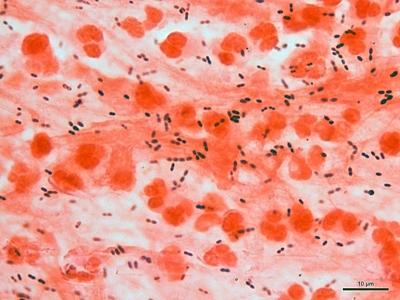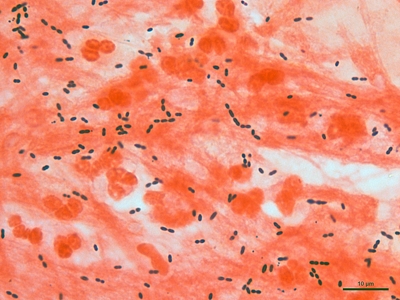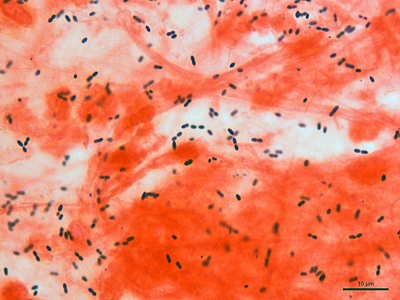Respiratory
Image Set 6 - (Sparrow 7IIC1) Streptococcus pneumoniae pneumonia
Image Set 6 - (Sparrow 7IIC1) Streptococcus pneumoniae pneumonia
Note: Evaluation of sputum specimens is based on organisms observed and the predominating types of tissue cells present. The presence of numerous numbers of WBC's and one predominating bacterial morphology is compatible with pneumonia. Large numbers of squamous epithelial cells (over 25/lpf) and/or several bacterial morphological types represents oropharyngeal contamination. Evaluation of bronchial washing is based on the presence of WBC's/hpf, predominance of a single bacterial morphology, or the presence of citrated columnar epithelial cells (brush cells). In cases of aspiration pneumoniae, several bacterial species may be involved. The type of cells present in specimens from these patients will be of great diagnostic significance.
KEY POINTS: Gram positive oval diplococci with virulent strains being encapsulated. This pathogen is the most common cause of bacterial pneumonia. The Quellung test can be used for identification of S. pneumoniae. Antibodies made against a subset of the more than 80 capsular serotypes are applied to the specimen and will cause an appearance of swelling in a positive test.
Click on images to magnify


